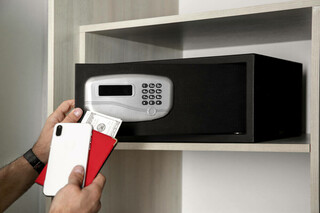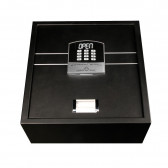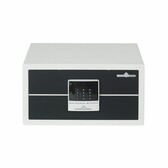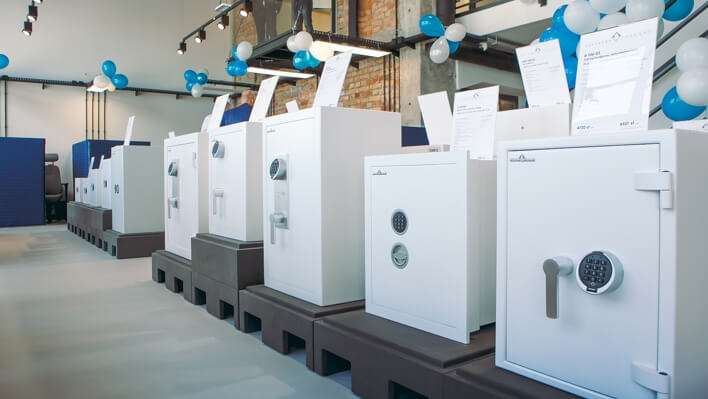Have you equipped your facility with safes in every room? Remember that the hotel is responsible for guests' belongings left in safes (included those placed in their rooms). This is why ensuring maximum security when using safes is so important. What are the most common mistakes made by hotels in this case?
Failure to fix the safe permanently
One of the most common faults is equipping a hotel room with a small safe (usually a medium-sized device – about 20 x 30 cm in size), which is not permanently fixed anywhere. Such a safe can be found e.g.: in the wardrobe, under the desk or in the cupboard next to the bed. The problem is that a container made of steel and so small in size, may not be super lightweight (usually weighs between 3-6 kg), but definitely cannot be considered a bulky equipment difficult to carry out. If a thief wishes, such a safe can be successfully put into a larger tourist backpack (in which even three such devices will fit) and calmly leave the hotel. In turn, the lock can be forced outside the facility, not caring either about the passing time or the noise.
And yet it would be enough to fix the safe permanently to the structure of the building, or if this is impossible, at least to a larger, fixed element, such as the back of a wardrobe. Especially since these armored strongboxes are usually equipped with mounting holes. The chances that a hotel thief in an act of desperation would start to demolish the wardrobe in the room are rather slim. It is worth emphasizing that it is wrong to assume that simply owning a safe guarantees complete security. If the safe is installed in accordance with the manufacturer's instructions, this will significantly increase its resistance to theft. Only when the safe is installed in accordance with the manufacturer's instructions will its resistance to theft be guaranteed.
Before assembling a safe, several aspects should be considered to ensure its functionality and ease of use for guests and staff. When choosing the right place to install the safe in a cabinet, take the depth of the safe into account so that it fits in the furniture. Make sure there is enough free space for the safe door to open freely without damaging the cabinet.
Not changing the master code
Every safe has a master code – an administrator code which allows the safe to be opened quickly if the combination entered by the user of the device is not known. In hotels, this ciher is used, for example, when a hotel guest has forgotten his/her PIN code or has left after locking the safe. In this case, the hotel staff opens the safe either using a special key supplied with the safe or using the master code. You also can easily find out how to open the safe with the master code on the Internet. To make things easier for the staff, usually all the safes in each room have the same master cipher, so that the staff do not have to remember or look for the codes for each individual room. There would still be nothing wrong with this (although it is not the safest procedure – especially in the age of network drives and tablets), if it were not for the fact that the master code of the safe, which is factory-set by the manufacturer as standard (usually the code "0000"), is never changed. As a result, the hotel safe is protected on the level of a computer password "12345" – any burglar will first check "0000" in order to break the master code of a hotel safe. And yet it would be enough to change the combination to the equally simple "8888" or "4567" to make opening the safe difficult to get inside the safe (not to mention a simple Excel table with the master code assigned to the room number).
You may be also interested in: Changing the code on your safe. 5 facts you need to know
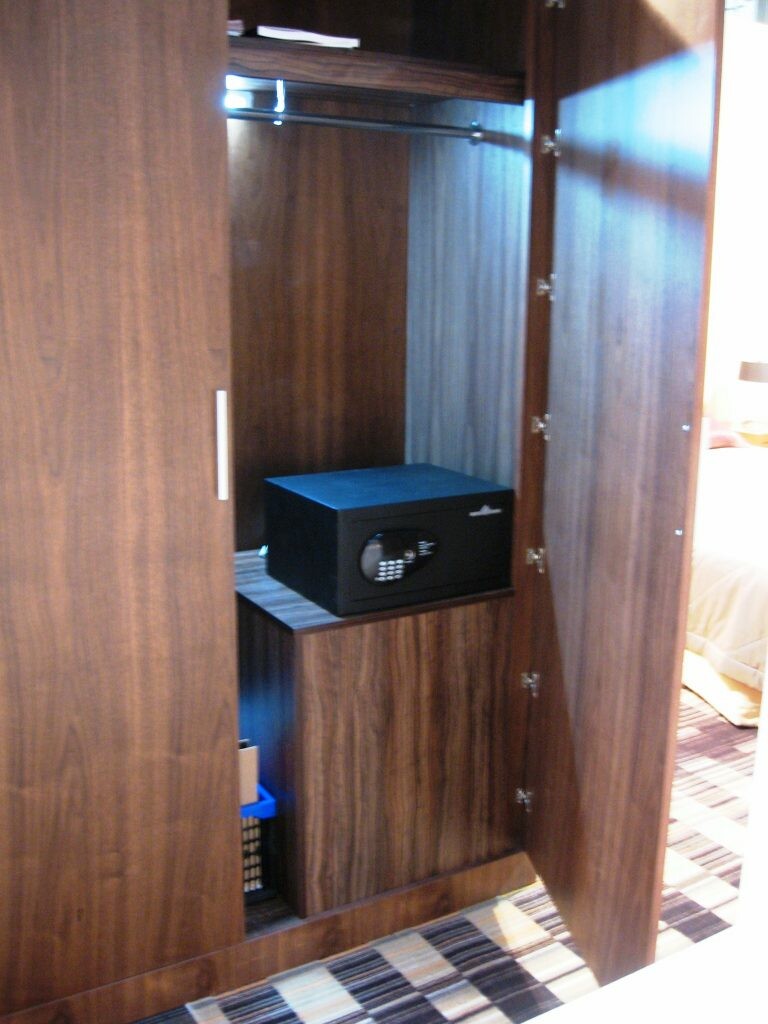
Purchase of safes operated by a credit card
The use of such safes is both secure and convenient. Secure, because the reader of the safe does not read the whole record from the card, and convenient because we do not have to remember the cipher. Moreover, this type of hotel safe does not have a master code. A threat is posed by the manipulation of the reader with a skimmer – i.e. a special cap – thanks to which it is possible to intercept the data of the credit card used in the safe. A thief can therefore rent a hotel room for one night, make the necessary changes to the safe (or even several, if he manages to break into the room) and then capture the data of its users. If he is clever and additionally modifies the operation of the safe so that the guest is forced to use the card PIN as the key to the safe, he will additionally even obtain the hotel guest's PIN (interestingly, in such cases the hotel guest does not suspect phishing). Mostly unaware of how safes work, he will consider it normal to wait for a PIN number and will not notify the hotel staff. Because the property staff rarely check the safes inside, skimmers can be permanently installed in the safe and the thief can use them repeatedly. The solution and defence against this type of theft is simply not to use credit card operated safes by a hotel, or to check the safe each time it is modified.
A safe with an audit appliance allows you to check which cipher was used for locking and opening the safe, when and by whom. This is extremely important if a theft is reported by a hotel guest without any visible signs of a safe having been broken into. The hotel manager must then, in order to avoid liability, prove beyond doubt that no member of staff opened the safe after the guest had placed their deposit in it. This is a very difficult situation because, on the one hand, it involves loss of image and, on the other hand, it is not covered by an insurance policy, which means that the hotel will have to return the lost value without the possibility of compensation. Buying a safe with an auditing device gives you the opportunity to prove that the theft could not have happened, because, for example, no one has opened it since the deposit was placed in the safe. It also makes it possible to prove that the safe was opened only by the guest or someone from his entourage using a code (the staff can set up if the cipher should be visible on the display or not) he knew and which he set himself. In this way – apart from actual theft cases – a safe with an audit function will allow the hotelier to protect itself against dishonesty on the part of the customer or persons accompanying him and attempts to extort compensation.
Purchasing a hotel safe without an audit function
Failure to consider guests‘ needs
In the case of hotels, failure to consider guests’ necessaries can be a serious mistake. Guests expect their valuables (like jewelry or expensive electronics) to be protected, and having a safe in their room is one of the most important features that ensures their sense of safety. A safe should be easy to use and, at the same time, provide a secure place to store precious and important items. Failure to take these needs into account can lead to guest dissatisfaction and, in extreme cases, to a loss of reputation for the hotel. It is therefore worth considering to assembly safes that meet guests' expectations in terms of security and ease of use.
Would you like to install safes in your facility to raise its standard and increase guest comfort? Discover our range, call us or write to us – we look forward to hearing from you!
Check: hotel safes at Hartmann Tresore
Read also: A hotel room safe – a requirement or a fad?
